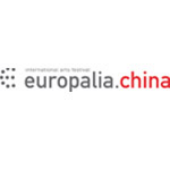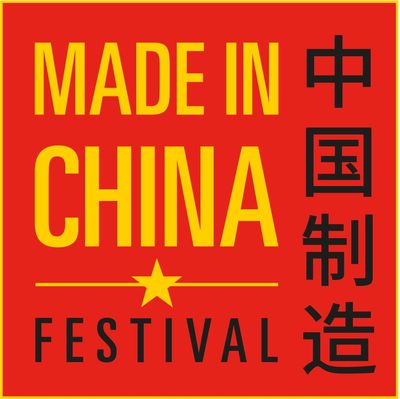China in Europe: europalia cultural festival

 Judith Staines met Bloeme van Roemburg in Brussels to discuss the programming, collaborations and expectations for the europalia.china festival. Bloeme van Roemburg works for Europalia International, as the coordinator on the music, performing arts, literature, cinema and conferences programme.
Judith Staines met Bloeme van Roemburg in Brussels to discuss the programming, collaborations and expectations for the europalia.china festival. Bloeme van Roemburg works for Europalia International, as the coordinator on the music, performing arts, literature, cinema and conferences programme.
They met at the Tea House set up in the specially renovated Dynasty building at the Mont des Arts/Kunstberg to welcome visitors to Europalia and highlight Chinese traditions and gastronomy.
Europalia is a major international arts festival held every two years to celebrate one invited country’s cultural heritage. From October to February, the festival fills numerous locations in Brussels, other Belgian cities and in neighbouring countries. The name is a combination of two words: “Europe” and “Opalia,” an ancient Roman harvest festival held in mid-December in honour of Ops, earth-goddess and fertility deity. Her name lies at the root of the Latin word “Opus”, that denotes a work of art.
JS: Tell me about Europalia.
BvR: Since 1969, Europalia has organised twenty-one festivals. Each has turned the spotlight on one culture in a comprehensive programme of music, fine arts, photography, cinema, theatre, dance and literature. Most of the previous Europalia festivals have featured European countries although we did invite Japan in 1989 and Mexico in 1993. So China, the 22nd festival, is the second invited country from Asia. europalia.china presents more than 500 events: 450 music, performance and literature events as well as 50 exhibitions.
JS: How do you approach the programming of such a large festival?
BvR: Each time we start with a new country, we surround ourselves with experts a long time in advance. We set up round tables of artists, academics, curators, programmers and others for intense brainstorming sessions. We ask these experts what we must include in our festival. For europalia.china we had around ten round tables. Lots of content emerged through their recommendations and we then distilled these ideas. Most of the experts are based here in Europe: we invite specialists who really know the artistic context of that country, as well as people who run the cultural institutions and venues here in Belgium and know the audience.
JS: Who are your partners in China and what was their input to the programme?
BvR: The main partner is the Ministry of Culture, along with other experts they appointed such as the Head Curator of exhibitions who is from the National Museum of China. The Ministry also nominated regional experts for the cities of Beijing, Shanghai and Hong Kong, and the provinces of Guangdong and Jiangsu. We work with the state administration for cultural heritage and the CPPA agency (China Performing Arts Agency) who manage the logistics of performing arts touring.
Once we had compiled our ‘ideal programme’ after the brainstorming sessions in Brussels we presented this to our Chinese partners. Then we started to negotiate. The Ministry of Culture also presented some ideas and suggestions, such as performances mixing song, dance and theatre, which did not always meet the artistic level Europalia stands for. All proposals were presented to our local programme partners. We found out what was possible, decided what would work in our context and built the programme this way.
JS: What kind of venues and collaborators do you work with?
BvR: Europalia works with more than 200 cultural partners in Belgium and abroad. It started in Brussels but now has a much wider regional impact. This year the programme reaches cities in Belgium and neighbouring countries with events in Lille and Amsterdam, Luxemburg and Munich.
It’s important to say that we have no venues ourselves and we only programme events in collaboration with existing venues. We find it doesn’t work to put on a programme in a place that does not already have a relationship with its audience so we don’t rent venues. We never push events on a venue – they have a chance to influence the programme and the programming decision is always with them. For example, there is not much contemporary dance in the China programme because the Belgian venue programmers know that dance audiences here have rather specialised and selective taste.
We also think about how an arts group coming from China can show their work to as many people as possible. In one venue you reach only a limited audience. Touring for groups from such a distance needs to be maximised to be more sustainable. For example, some of the music groups are already touring in Europe at that time and have other concerts in Finland and Germany. China is the Guest of Honour for the Frankfurt Bookfair 2009 so some of the big names in Chinese literature will come to both Frankfurt and Europalia. We hope that some of the major events and exhibitions will also travel on to other countries afterwards – for example, festivals are planned in Switzerland and Italy with China themes.
JS: Were there any particular problems in the planning stages?
BvR: With the huge focus on the Beijing Olympics in 2008, there were some delays in planning the programme. We didn’t get final confirmation for many performing arts companies until September 2008 after the Olympics had finished. This made it difficult for the host venues in Brussels who would normally have their programming finalised much earlier. Europalia.China has been very different from other Europalia festivals. The programme has involved intense negotiation. Of course some things we wanted were not possible but I am very pleased with the results and look forward to seeing the audience responses.
JS: How do you market such a wide-ranging programme?
BvR: Audiences will have a huge amount to choose from. We developed four themes to group the events: Eternal China, Contemporary China, Colourful China and China and the World. These themes are intended to help people find their way through the extensive programme and identify themselves in relation to what is on offer. Actually, we had a different concept at first, based on Chinese characters – heaven, the human body etc. But we found this worked better.
We had some contacts with the local Chinese community in Belgium, especially in Antwerp where most of them live and hope they will also be involved.
People think after the Olympics that they know China but it is such a huge country, we don’t really know it at all. Our aim with Europalia is to show the richness and diversity of China; we want to explain the chronology of its history and to present contemporary China.
JS: Tell me about some of the events you are looking forward to.
BvR: There are four Chinese operas in the programme: two are contemporary and two classical. The experts recognised that this work is top quality and it will be seen in very good venues. I am also looking forward to the Gong Linna concert – I think her style and virtuosity will really connect with audiences here. In Ghent, “China Express – sounds from the underground” is an event with DJs and VJs from the alternative music scene in Beijing and Shanghai that opens up new connections for the local music scene in Belgium.
JS: Are there opportunities for interaction between artists?
BvR: The events programme is actually a big collection of individual moments. But we also incorporate some collaborative events where Chinese artists can meet local artists for workshops or residencies. For example, two pairs of young Chinese choreographers will have residencies with Belgian dance organisations in Antwerp and Brussels. In December we have a workshop called ‘Institute for Living Voices: China’s Voices’ organised at Vooruit, Ghent by the ILV international project of Music Theatre Transparant, on the vocal diversity of China. Artists will be giving workshops on different vocal techniques which come from various places and traditions. In fact, our Chinese partners could not understand why we wanted to combine and decontextualise these artistic practices. For the artists here, it is very interesting and it absolutely fits with the ILV context. But there are also some examples of close collaboration for theatre and literature.
I attended the IETM meeting in China in 2006 and heard how much artists there want to collaborate in this way. We received several specific requests from Chinese artists we were inviting to perform in Europalia to make it possible to meet artists and make long-term connections, for example, the Lin Zhaohua Theatre Studio.
Therefore we worked on this potential for longer term relationships and this aspect of the programme is more developed than in previous festivals. Europalia provides the impulse and I really hope there will be connections between artists after the festival.
Further information:
http://www.europalia.be
http://www.instituteforlivingvoice.be/
www.ietm.org
Judith Staines is a writer, researcher and project manager based in the UK who specialises in European cultural cooperation and international mobility issues. She has worked on many projects for European cultural networks such as IETM and Culture Action Europe. She is currently Editor: Performing and Visual Arts (Europe) for www.culture360.org, General Editor of www.on-the-move.org cultural mobility website and a former editorial contributor to www.labforculture.org. She is co-author of an EU-commissioned guide to mobility of cultural goods between Russia and the EU and wrote handbooks for visual artists in the UK.
Similar content
posted on
posted on
posted on
posted on
posted on
posted on





